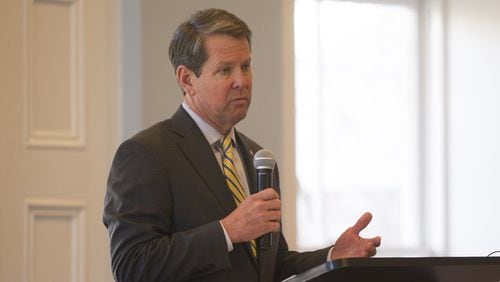PolitiFact recently checked a Georgia gubernatorial candidate's claim about high-speed availability for rural residents; a TV commentator's statement on the number of immigrants in the country; and a senator's comment about the nation's rising national debt. Here are summaries of our findings. Full versions can be found at www.politifact.com.
In Georgia, “25 percent of rural residents” are “without access to high-speed internet.”
— Brian Kemp on Wednesday, February 7th, 2018 in campaign website
We found that Kemp accurately cited information stemming from a 2016 Federal Communications Commission report on broadband deployment.
The FCC benchmark for fixed (not mobile) broadband internet is speeds of 25 Megabits per second for downloads and 3 Megabits per second for uploads.
Kemp's campaign referred us to a May 2017 presentation from the House Budget and Research Office given at a House Rural Development Council meeting. Part of that presentation said an estimated 626,070 people, or 25 percent of the rural population, were without access to 25 Mbps/3 Mbps internet service. Those figures trace back to the FCC's 2016 Broadband Progress Report, which also found that 39 percent of all rural Americans did not have access to broadband internet.
A more recent FCC report on broadband deployment, released this month, found that 71.9 percent of rural Georgians had access to fixed terrestrial broadband at speeds of 25 Mbps/3 Mbps, suggesting 28.1 percent did not.
Our ruling
Kemp’s claim is backed by data reported by the FCC in 2016. New data show that the percentage of rural residents without access to fixed terrestrial broadband is 28.1 percent.
We rate Kemp's statement True.
“There are more immigrants in our country right now than any other time.”
— Tucker Carlson on Thursday, Feb. 8, 2018 in a tweet
Carlson, of Fox News, linked us to reports from the Center for Immigration Studies and Pew Research Center.
The Pew report said the U.S. foreign-born population reached a record 43.2 million in 2015. Carlson also noted that the Center for Immigration Studies in October 2017 said the U.S. immigrant population hit a record 43.7 million in July 2016. (The center, which favors low levels of immigration, analyzed data from the Census' 2016 American Community Survey.
Our ruling
The number of immigrants in the United States is the highest it’s ever been: about 43.7 million. But it’s worth noting that immigrants as a share of the population reached its peak in 1890, at 14.8 percent. In 2016, immigrants accounted for 13.5 percent of the population.
Carlson's statement is accurate but needs clarification or additional information. We rate it Mostly True.
“George W. Bush doubled the debt from $5 trillion to $10 trillion. President Obama doubled the debt from $10 trillion to $20 trillion. Now we’re on course to exceed $30 trillion in the next seven years or so.”
— Sen. Rand Paul, R-Ky., on Thursday, Feb. 8, 2018 in a Senate floor speech
We found that this assertion is largely accurate, but needs a few bits of context.
Using the Treasury Department's "Debt to the Penny" calculator, we were able to pinpoint the amount of debt created under each president.
When Bush was sworn in on Jan. 20, 2001, the gross federal debt was $5.73 trillion. By the time he left office on Jan. 20, 2009, it was $10.63 trillion. So Paul is on target with the numbers on Bush’s watch. As for Obama, the debt rose on his watch to $19.95 trillion. That’s not quite $20 trillion, but it’s awfully close.
While Paul is basically right on the numbers, there is some nuance to add:
Paul was using the larger of two measures for debt: gross federal debt, which includes debt held by the public as well as what one part of the federal government owes to another part of the federal government. The debt figures would have been smaller if he’d only used publicly held debt, another commonly used measurement. It’s an exaggeration to say Bush and Obama both “doubled” the debt. Factors beyond presidential actions helped enable that doubling, including the aging of the Baby Boom, the Great Recession, and Congress’ actions in setting spending levels.
Our ruling
Paul is essentially right on all of the numbers. But, while Bush and Obama played a role, so did other factors including demographics, external events, and congressional actions driven by the other party.
We rate the statement Mostly True.
About the Author






